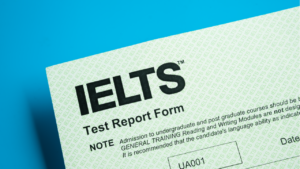To perform well on the IELTS Reading section, it’s crucial to become familiar with the various question types that may appear on test day. The best way to achieve this familiarity is through consistent practice. That’s where our blog comes in – we’ll guide you through solving the Cutty Sark reading passage, locating answers, and deducing explanations.
By thoroughly examining each question type, including multiple-choice, matching headings, and True/False/Not Given questions, you’ll gain a comprehensive understanding of the IELTS Reading section.
Our expert IELTS trainers in India have meticulously designed and verified all resources, questions, answers, and explanations to ensure their authenticity. Practicing this passage will equip you with the tools you need to succeed. Let’s dive in and take your skills to the next level!
Leap Advantage Virtual Spot Offer Event on May 10th 2024

Last call to secure your spot for Masters in STEM Program in the US for Fall ’24 exclusively for graduates and above.
Leap Advantage Virtual Spot Offer Event on May 10th 2024
Last call to secure your spot for Masters in STEM Program in the US for Fall ’24 exclusively for graduates and above.

Question Types in the Cutty Sark Reading Passage
The following are some commonly asked questions related to Cutty Sark passage:
Sentence Completion
The sentence completion question type requires you to complete a sentence using certain information from the passage. This question type tests your ability to understand the main idea of the passage and identify specific information, such as facts, details, and examples.
Crack IELTS Exam in first attempt

Attend Leap’s free masterclass to get tips, tricks and advance strategies to crack IELTS exam in first attempt
Crack IELTS Exam in first attempt
Attend Leap’s free masterclass to get tips, tricks and advance strategies to crack IELTS exam in first attempt

How to Answer?
Read the instructions carefully and note how many words you can write. Next, read the questions, identify keywords and paraphrase them. Locate similar words in the passage by scanning quickly. Now study the text more carefully to establish the answer. Repeat the same for other questions.
True/False/Not Given Questions
True/ False/ Not Given questions determine whether a statement based on the passage is true, false, or not given. It can be challenging, as the options are similar, and their differences may be subtle.
How to Answer?
First, read the instructions carefully and start understanding the questions. Scan the statements carefully and identify the keywords. Also, paraphrase the keywords or try to find synonyms. Now read the passage carefully and find similar words in the passage.
You must match the keywords and decide if the statement is True, False or Not Given.
Be cautious of negative words and prefixes (like un, non, etc.) that impact the overall meaning of a statement. Note down double negatives, like “not unlikely.” If an event is “not unlikely,” it means it is a fact and true.
If you find modifiers (like sometimes, usually, probably, might, etc.), they are used in true statements. And, if you find extreme modifiers (words like always, never, absolutely, only, no one etc.) that may make a statement false.

What is the Cutty Sark Reading Passage About?
You might be curious to know more about the Cutty Sark Reading passage. The passage mainly concerns Cutty Sark, a historic sailing ship on display in Greenwich, London.
We have laid out a few interesting facts about this passage:
- The Reading passage provides information about Cutty Sark’s history, construction, voyages, and current status as a museum ship.
- The passage also discussed the cultural significance of the Cutty Sark, its role in maritime history, and its impact on the tea trade between China and Britain.
- It provides a unique opportunity to improve your critical reading skills.
- Cutty Sark provides a glimpse into the culture and history, offering you a chance to expand your knowledge and usage of the English language.
Now that you have a brief idea about the passage, we recommend you read the passage carefully, analyse the answer key and follow the exclusive tips we have shortlisted.
Cutty Sark: The Fastest Sailing Ship of All Time
The nineteenth century was a period of great technological development in Britain, and for shipping, the major changes were from wind to steam power and from wood to iron and steel.
The fastest commercial sailing vessels of all time were clippers, three-masted ships built to transport goods around the world, although some also took passengers. From the 1840s until 1869, when the Suez Canal opened and steam propulsion was replacing sail, clippers dominated world trade. Although many were built, only one has survived more or less intact: Cutty Sark, now on display in Greenwich, southeast London.
Cutty Sark’s unusual name comes from the poem Tam O’Shanter by the Scottish poet Robert Burns. Tam, a farmer, is chased by a witch called Nannie, who is wearing a ‘cutty sark’ – an old Scottish name for a short nightdress. The witch is depicted in Cutty Sark’s figurehead – the carving of a woman typically at the front of old sailing ships. In legend, and in Burns’s poem, witches cannot cross water, so this was a rather strange choice of name for a ship.
Cutty Sark was built in Dumbarton, Scotland, in 1869, for a shipping company owned by John Willis. To carry out construction, Willis chose a new shipbuilding firm, Scott & Linton, and ensured that the contract with them put him in a very strong position. In the end, the firm was forced out of business, and the ship was finished by a competitor.
Willis’s company was active in the tea trade between China and Britain, where speed could bring shipowners both profits and prestige, so Cutty Sark was designed to make the journey more quickly than any other ship. On her maiden voyage in 1870, she set sail from London, carrying large amounts of goods to China. She returned laden with tea, making the journey back to London in four months. However, Cutty Sark never lived up to the high expectations of her owner as a result of bad winds and various misfortunes.
On one occasion, in 1872, the ship and a rival clipper, Thermopylae, left port in China on the same day. Crossing the Indian Ocean, Cutty Sark gained a lead of over 400 miles, but then her rudder was severely damaged in stormy seas, making her impossible to steer. The ship’s crew had the daunting task of repairing the rudder at sea and only succeeded at the second attempt. Cutty Sark reached London a week after Thermopylae.
Steam ships posed a growing threat to clippers, as their speed and cargo capacity increased. In addition, the opening of the Suez Canal in 1869, the same year that Cutty Sark was launched, had a serious impact. While steam ships could make use of the quick, direct route between the Mediterranean and the Red Sea, the canal was of no use to sailing ships, which needed the much stronger winds of the oceans, and so had to sail a far greater distance. Steam ships reduced the journey time between Britain and China by approximately two months.
By 1878, tea traders weren’t interested in Cutty Sark, and instead, she took on the much less prestigious work of carrying any cargo between any two ports in the world. In 1880, violence aboard the ship ultimately led to the captain’s replacement with an incompetent drunkard who stole the crew’s wages. He was suspended from service, and a new captain appointed. This marked a turnaround and the beginning of the most successful period in Cutty Sark’s working life, transporting wool from Australia to Britain. One such journey took just under 12 weeks, beating every other ship sailing that year by around a month.
The ship’s next captain, Richard Woodget, was an excellent navigator who got the best out of his ship and crew. As a sailing ship, Cutty Sark depended on the strong trade winds of the southern hemisphere, and Woodget took her further south than any previous captain, bringing her dangerously close to icebergs off the southern tip of South America. His gamble paid off, though, and the ship was the fastest vessel in the wool trade for ten years.
As competition from steam ships increased in the 1890s, and Cutty Sark approached the end of her life expectancy, she became less profitable. She was sold to a Portuguese firm, which renamed her Ferreira. For the next 25 years, she again carried miscellaneous cargoes around the world.
Badly damaged in a gale in 1922, she was put into Falmouth harbor in southwest England, for repairs. Wilfred Dowman, a retired sea captain who owned a training vessel, recognised her and tried to buy her, but without success. She returned to Portugal and was sold to another Portuguese company. Dowman was determined, however, and offered a high price: this was accepted, and the ship returned to Falmouth the following year and had her original name restored.
Dowman used Cutty Sark as a training ship, and she continued in this role after his death. When she was no longer required, in 1954, she was transferred to a dry dock at Greenwich to go on public display. The ship suffered from fire in 2007 and again, less seriously, in 2014, but now Cutty Sark attracts a quarter of a million visitors a year.
Based on the Reading passage above, you should spend about 20 minutes on questions 1-14. The instructions for each question type are given below.
Questions 1-8
Do the following statements agree with the information given in Reading Passage 1?
In boxes 1-8 on your answer sheet, write
TRUE if the statement agrees with the information
FALSE if the statement contradicts the information
NOT GIVEN if there is no information on this
- Clippers were originally intended to be used as passenger ships.
- Cutty Sark was given the name of a character in a poem.
- The contract between John Willis and Scott & Linton favoured Willis.
- John Willis wanted Cutty Sark to be the fastest tea clipper travelling between the UK and China.
- Despite storm damage, Cutty Sark beat Thermopylae back to London.
- The opening of the Suez Canal meant that steam ships could travel between Britain and China faster than clippers.
- Steamships sometimes used the ocean route to travel between London and China.
- Captain Woodget put Cutty Sark at risk of hitting an iceberg.
Questions 9-13
Complete the sentences below.
Choose ONE WORD ONLY from the passage for each answer.
Write your answers in boxes 9-13 on your answer sheet.
- After 1880, Cutty Sark carried ………………………… as its main cargo during its most successful time.
- As a captain and …………………………., Woodget was very skilled.
- Ferreira went to Falmouth to repair the damage that a …………………………. had caused.
- Between 1923 and 1954, Cutty Sark was used for …………………………..
- Cutty Sark has twice been damaged by ………………………… in the 21st century.
Cutty Sark Reading Passage: Answers & Explanations
Now, compare your answers with the answers below. With the explanations given for each answer, you’ll realise your answering process.
1. Ans: False
Answer explanation: In paragraph 2, lines 1-2, it is mentioned that clippers were originally built to transport goods, not passengers. Only a few clippers took passengers, but most were good carriers.
2. Ans: False
Answer explanation: In paragraph 3, lines 1-3, we can find the answer to this question. The author writes about the naming of the Cutty Sark, and he says Cutty Sark’s unusual name comes from the poem Tam O’Shanter, a farmer, is chased by a witch called Nannie, who is wearing a ‘Cutty Sark’ – an old Scottish name for a short nightdress. So, these lines indicate that Cutty Sark was the name of a dress, not the name of a character in the poem.
3. Ans: True
Answer explanation: Paragraph 4, lines 1-3, discusses about the contract. The lines suggest that Willis chose Scott & Linton, and he made a contract that put him in a very good position.
4. Ans: True
Answer explanation: Paragraph 5, lines 1-2, talk about the journey of Cutty Sark as a tea clipper. The next lines clearly indicate that the John Willis and his company built Cutty Sark for it to be faster than any other ship trading between UK and China.
5. Ans: False
Answer explanation: The last lines of paragraph 6 has the answer to this question. In this paragraph, the author states that Cutty Sark reached London a week after Thermopylae. So, this states that Cutty Sark failed to beat Thermopylae.
6. Ans: True
Answer explanation: We can find the reference to the Sue canal in paragraph 7, line 2. Steam ships reduced the journey time between Britain and China. The author states that clippers were not allowed to use Suez Canal. Steam ships used the old route and took advantage of passing through Suez Canal to reduce the journey time by two months.
7. Ans: Not Given
8. Ans: True
Answer explanation: Answer to this question can be found in lines 3-4 of paragraph 8. It clearly depicts that Captain Woodget took Cutty Sark further to the south than any previous captain bringing the ship dangerously close to icebergs in South America.
9. Ans: wool
Answer explanation: The answer lies in lines 4-6 of paragraph 8. The author says that the most successful period in Cutty Sark’s working life began when she transported wool from Australia to Britain. The clipper Cutty Sark transported wool as the main cargo.
10. Ans: navigator
Answer explanation: The answer lies in line 1 of paragraph 9. In this paragraph, the author says Captain Richard Woodget was an excellent navigator.
11. Ans: gale
Answer explanation: We can find the answer to this question in line 1 and paragraph no. 11. The author says that badly damaged in a gale in 1922, Cutty Sark was put into Falmouth harbor in southwest England, for repairs. So, it is clear that a gale caused damage to the ship.
12. Ans: training
Answer explanation: The answer is in line 1, paragraph 12. We can read that Cutty Sark was used as a training ship between 1923 and 1954.
13. Ans: Fire
Answer explanation: The answer is in paragraph 12, lines 3-4. The author says that the ship suffered from fire in 2007. There are two cases of fire which damaged the ship.
Also Read:
IELTS Academic Reading Score Guide 2023: Expert Tips & Sample Questions
IELTS Reading Score 7+: Preparation Strategy
Want more authentic materials to practice?
Register for the IELTS Courses by Leap Scholar and get access to mock tests, live classes, speaking and writing evaluations and comprehensive study materials. We provide 100+ practice tests and answer evaluations by the top IELTS Trainers in India.
Tips to Solve Cutty Sark Reading Passage Successfully
Here are tips to help you practise such Reading passages. They are designed to help you maximize your potential and achieve your desired score.
1. Practice Time Management
Practising time management is crucial in the reading section. If you find yourself stuck on a particular question, move on and return to it later. True/ False questions take some extra time, so you should aim to spend no more than 20 minutes on each section.
2. Look for Keywords
Before you start answering the questions, skim the passage and identify keywords. Look for keywords in the statement and focus on specific information in the passage. Look for details such as dates, numbers, and names to find your answers easily.
3. Use Grammar Rules
Cutty Sark passage has sentence completion questions that require you to use grammar rules while choosing the correct word. To find the required word, you must pay attention to the tense, preposition, articles and other parts of speech.
4. Practice Makes you Confident
The more you practice different questions, the better you will identify the clues and keywords and fill in the blank with the correct word. Take practice tests and analyse your answers carefully to identify areas where you need improvement.
Want more tips to score a 7+ on the IELTS Reading test? Click Here!
Cutty Sark Reading answers, explanations and expert tips were mainly designed to help you analyse your answering process. We hope you found this blog helpful in realising your Reading aptitude.
If you want more support with IELTS Reading, consider downloading our most convenient IELTS app, which covers all practice materials to succeed in your IELTS exam.
Download the app and gain access to specially crafted lessons and practice tests and join our pan-Indian community.
Try LeapScholar IELTS prep app today to make it big!
Frequently Asked Questions
-
Do I lose marks for grammatical errors in the IELTS Reading exam?
You will definitely lose marks for spelling and grammatical errors in your Reading exams. For instance, if the correct answer to a question is ‘injection’ and you write ‘injction’, you will be marked wrong.
-
How to improve my vocabulary for the IELTS Reading test?
You can improve your IELTS Reading vocabulary by reading books, newspapers, and magazines in English. Make a list of new words, learn and try to use them in sentences.
-
What skills are assessed in the IELTS Reading Test?
Understanding the main idea, comprehending particular details, determining the author’s purpose, recognising tone and attitude, and inferring meaning are just a few of the skills evaluated by examiners.
-
How to score well for the sentence completion question type?
Here are some ways to score well in the Sentence completion question type: Read questions, identify keywords, look for clues, predict your answers, check for grammar, be careful with negatives and read questions carefully.
-
How to score well for the True/ False/ Not Given question type?
Here are some ways to score well in the True/ False/ Not Given question type: Read the instructions carefully, skim the passage, scan for specific information, look for evidence, pay attention to negations and eliminate incorrect answers.
-
How to manage my time effectively for the IELTS reading test?
You can manage by allocating a specific time for each question. Ensure you don’t spend much time on a particular question.
-
What type of Reading passages are included in the IELTS reading test?
The IELTS Reading test includes a variety of passages taken from magazines, academic papers, academic textbooks, newspapers, reports etc







